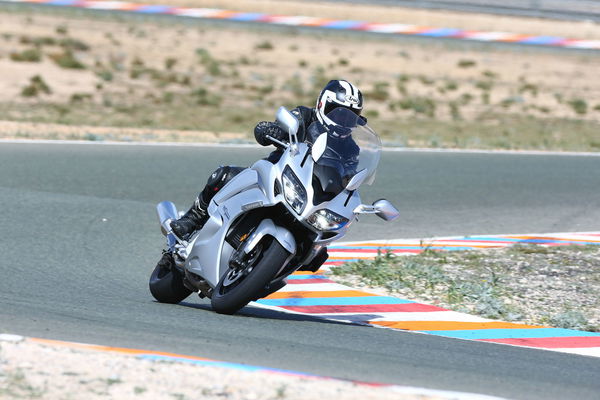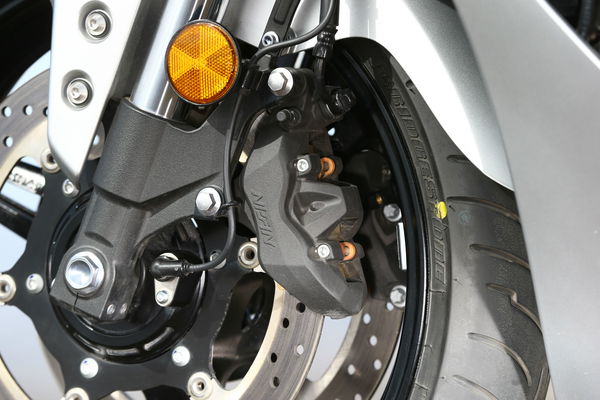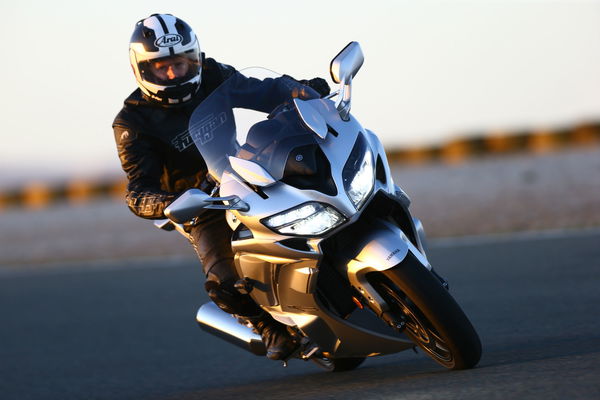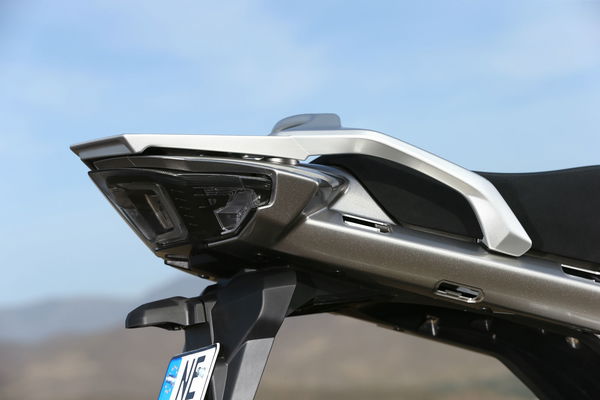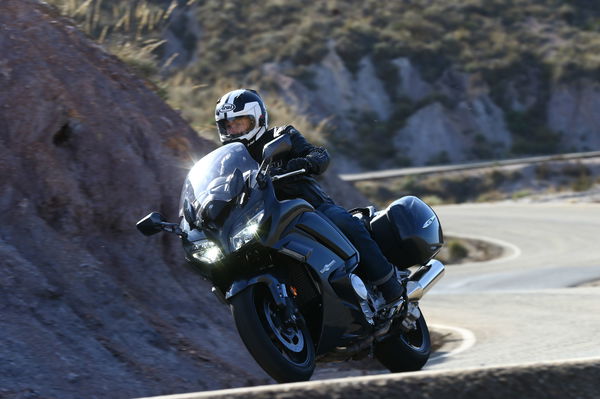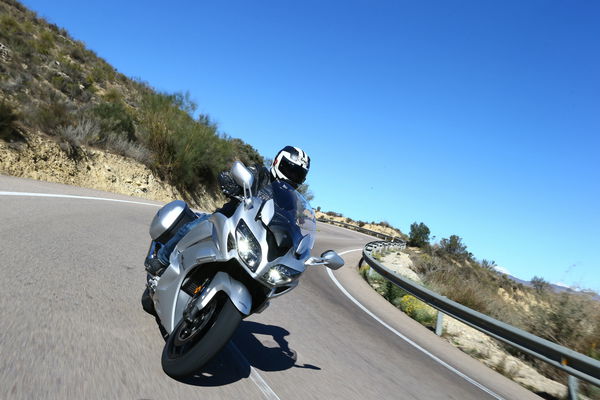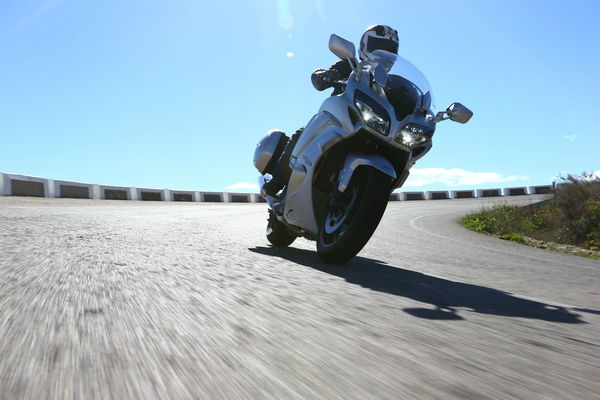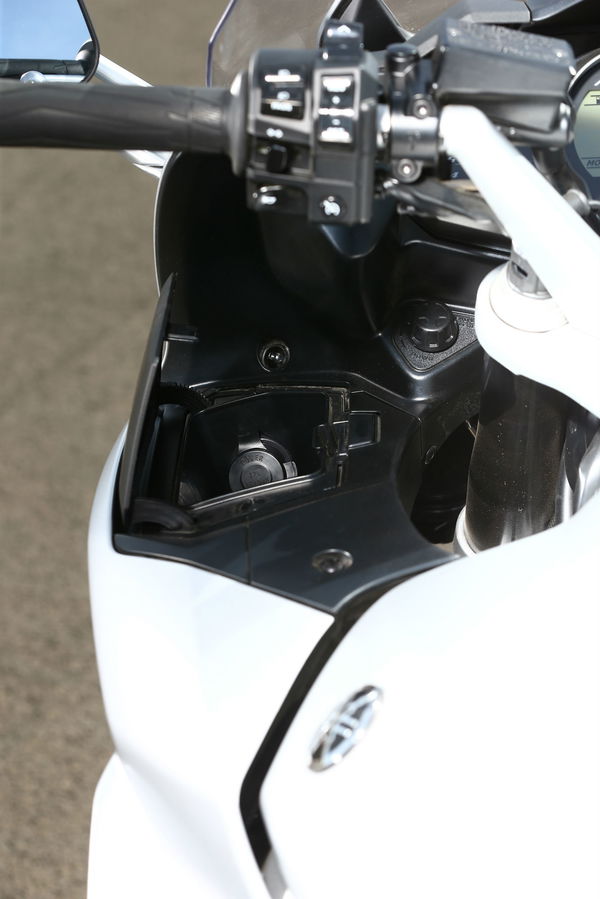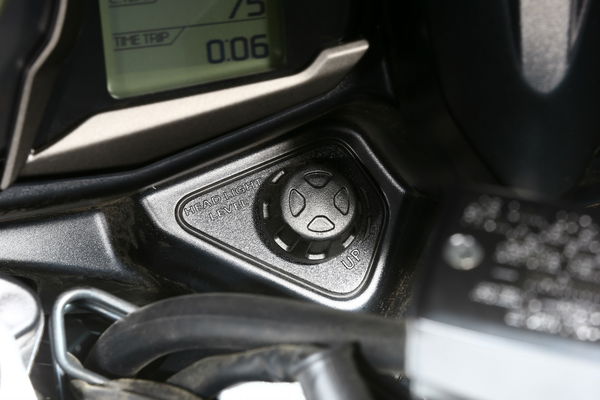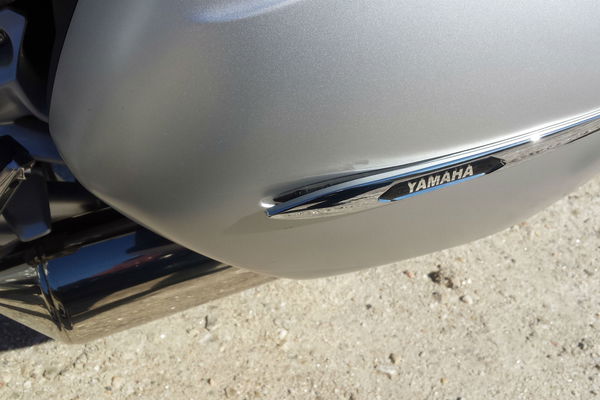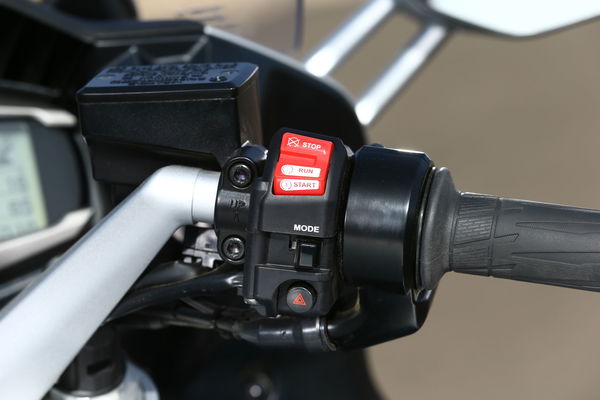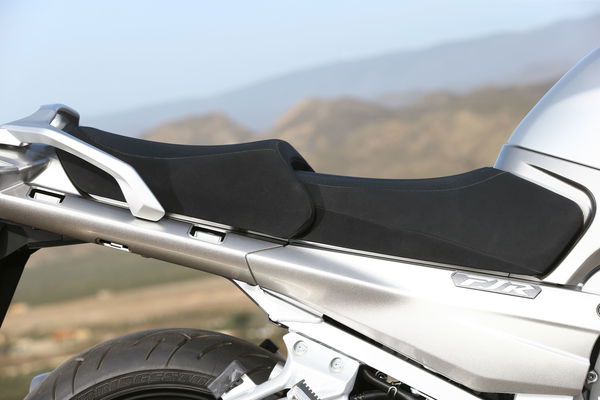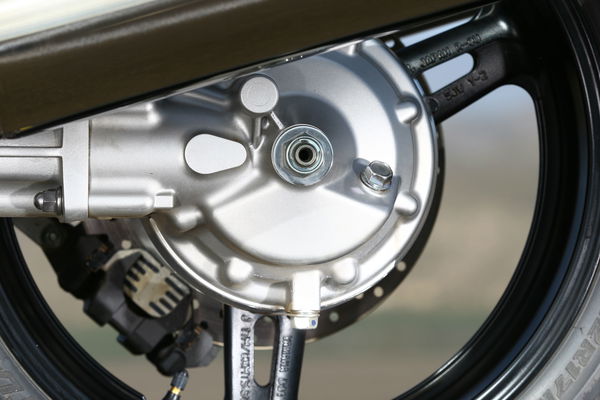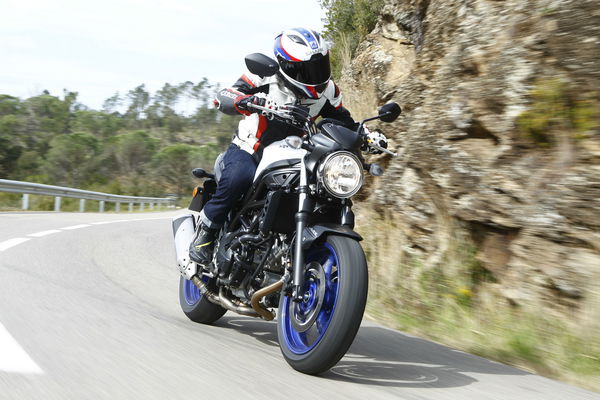First ride: Yamaha FJR1300 review
Yamaha’s updated flagship tourer proves it can tackle twisties - even on track
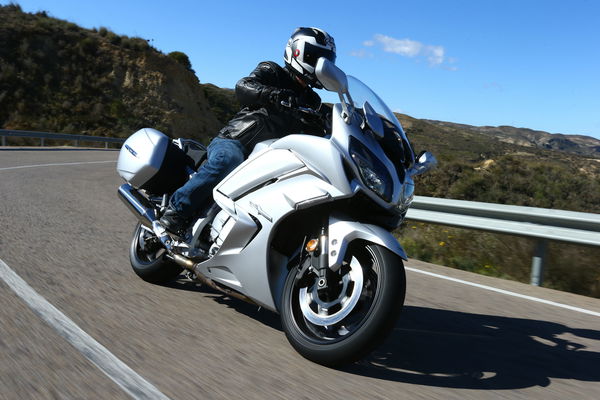

THERE’S not much consensus on what makes a sports-tourer. Speak to KTM and it’s the 173hp 1290 Super Duke GT, one step from the naked bike they called the ‘The Beast’. Speak to Yamaha and it’s the full-dress FJR1300, with glove-box, electric screen and heated grips. Yes, it's listed as a sports-tourer on the firm's website.
But at least we can all agree on which of those bikes should be launched on track. Oh, hang on.
While the KTM got a rain-drenched road launch, Yamaha, for reasons that still aren’t crystal clear, opted to launch the FJR with some track sessions at Almeria Circuit in Spain. Because who doesn’t want to tackle blind off-camber high-speed bends on a 292kg tourer?
I'm being flippant; Yamaha had its reasons for the decision. Updates to the FJR1300 for 2016 include the addition of a sixth gear where previous versions have five. Gears one to five are now shorter than they used to be, while sixth is taller than the old fifth. Yamaha wanted to create the opportunity to properly test the new ratios in an environment where the bike's full 146hp could be unleashed in each gear, as well as demonstrate that the FJR has more sporting potential than we perhaps estimated.
The sixth gear has been added with no increase in crankcase width, Yamaha says. That's been achieved using helical cut gears, meaning the teeth take a diagonal rather than straight path, allowing narrower cogs without a reduction in teeth width.
It wouldn’t have been top of my list of bikes to use first time out on a fast and technical circuit, but actually the FJR made a simple job of it.
There's loads of low-down and mid-range torque from the 1298cc in-line-four but also a good top-end. In third gear there's enough go from about 3,000rpm to drive out of the tightest corners and a 9,000rpm red line to reach before the next. With frequent shifts to stay in the top half of the range, it's capable of a pace that might surprise some riders of smaller and lighter bikes.
But in fact I had most fun just staying in third. The broad, deliciously smooth spread of torque meant that was all I needed for most of the track. Only a few straights required more - and none was long enough to test the new sixth, at least not without changing up early.
The maximum lean angle is impressive, with a reasonable effort required to make a hero blob scrape. The brakes – four-pot Nissin calipers on twin 320mm front discs and a single-pot on a 282mm rear – are pretty good too. ABS is standard, and one journalist complained of the bike running on as he broke late for a corner. He had to chuck it into the bend and hope. He made it round, but reckoned he could have slowed more quickly if the ABS hadn’t activated. I think it’s only an expert rider pushing really hard that’s likely to experience that. And let’s face it, a track isn’t the FJR’s natural habitat.
Before I’d worked out third gear was pretty much all I needed, I put another feature to good work with some needless shifts to second: the assist and slipper clutch. The assist part makes the lever 20% lighter to pull according to Yamaha, while the slipper bit makes back-torque less likely to lock the rear wheel and unsettle the bike on aggressive down-shifts. It’s basically like being really smooth with the clutch even when you’re not and, in line with the overall sensation of riding the bike on track, it seemed odd for such a big machine to be doing it so well. Slipper clutches make me think of R1s and Panigales, not panniers and shaft-drive (okay, the panniers were taken off for the track session).
The session went until dusk at 7pm and was where we first got to test the FJR1300's new cornering lights (a feature also boasted by the very different Super Duke GT).
The FJR's lights have become all LED, with two for low beam and two for high. An additional three LEDs on each side illuminate progressively as the machine corners, using an inertial measurement unit to sense lean angle. The idea is to help you see around the trajectory of a bend in the dark. The first one comes on at 5° of lean.
Except it didn’t, because the cornering lights on six of the eight bikes temporarily stopped working.
The issue struck during a tracking photo session, which involved riders following a car with a photographer in the back. When one bike was done, it would overtake the car and the next in the line would take its place, and so on.
The first two bikes went okay but at the third (mine) the photographer noticed the cornering lights weren’t working. When it became clear they were also not working on the remaining five bikes, the photo session was abandoned.
Minutes later the lights of all the bikes just as strangely began working again, and they continued to work for the duration of the launch ride. The above-right picture, showing all three right-hand cornering LEDs on, was taken in a second photo session.
Yamaha has not yet given a definitive explanation and some motorcycle titles present at the launch have published reviews that do not mention the episode, including MCN and the insurance company website Bennetts Bike Social.
When the cornering lights functioned, I could see the beam spread as lean angle increased. I couldn’t help thinking a road ride at night might have better demonstrated their usefulness.
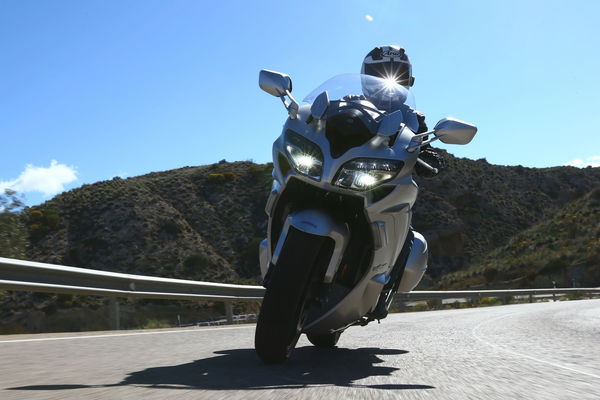
When we did get out on the road, the next day, the FJR swallowed up the straights and corners with the same sense of casual haste. It weighs what it weighs – it’s never going to put you in touch with the tarmac in the way a lighter machine can – but it’s stable and compliant, and again the tractable engine means good progress with few gear changes. It’s no slouch shown a bit of open road, either.
There are three versions of the tourer, ending with the letters ‘A’, ‘AE’ or ‘AS’. The FJR1300AE and FJR1300AS both have electronically adjustable suspension and cornering lights. The AS also lets you change gear and pull away without using the clutch, while the others don’t. The FJR1300A has normal suspension and no cornering lights but it does come with the same assist/slipper clutch as the AE. All versions are also compatible with a Dainese jacket air-bag system called D-Air Street, which connects to the bike.
On the launch ride we only tested the AE model.
Its electronically adjustable suspension has preload settings for rider, rider and luggage, rider and pillion and two people plus luggage. Damping can also be adjusted at a button push, choosing from Soft, Standard and Hard. Hard results in less immediate fork dive under braking. With its mattress-like seat, none of the modes can make the FJR uncomfortable but Soft brings an executive ride-quality to long straights. Now you can put it in sixth, set the cruise control and plan what to have for tea.
All versions also have three riding modes – Standard, Touring and Sport - which alter the throttle response. There didn’t seem to be an especially dramatic difference between them to me, though I don’t doubt it’s there. In all of them the throttle response is super-smooth.
Changing settings isn’t too complicated, with only a few menus to scroll through and all the information shown clearly on the expansive dash.
Cruising along at high-speed in sixth, one thing disturbed my dinner planning: the wind noise and buffeting. The screen is electrically adjustable, but only goes up to about chin-height for me. A little higher and I’d have been looking through it, with the wind properly quietened. It only takes a button push to lower it, so why not? I'm 5'9" so tall riders are especially likely to hanker after more protection.
Not much else is wrong. The panniers are easy to remove, and the bike still looks smart without them. One complaint about previous versions of the bike has been the absence of a top box from Yamaha’s accessory range. Now the firm is introducing a 50-litre one, along with a rack, to fit models made from 2013 on. Why has it taken this long?
Heated grips come as standard and get properly warm, with three heat levels. I found myself quickly scrolling back through a menu to turn them off after an ill-advised test of the highest setting in Spanish sunshine.
And you get a convenient glove-box in the fairing, big enough for wallet, phone and more, with a power socket inside and a door that only opens when the key is in the ignition.
I noticed the Yamaha badge was coming off a pannier, which isn’t what you expect on a brand-new flagship tourer. I also thought perhaps the FJR would benefit from electric folding mirrors, à la Suzuki Burgman 650, for easier filtering with the panniers off. The FJR's mirrors fold manually but not very much - they still stick out quite a lot.
And why not have a keyless ignition on a machine priding itself on equipment?
But I’m looking for shortcomings. If you’re not, you’ll probably find the FJR lacking not at all. It’s not a sports tourer, it’s tourer, but it does have more performance potential than its executive look and size suggest, with decent handling and a strong, smooth, tractable engine.
It’s £13,299 for the base ‘A’ model, £14,799 for the AE – the one I rode – or £15,499 for the AS, with clutchless shifting. That’s a lower starting price than one of its closest competitors, BMW’s R1200RT, at £13,810.
FJR prices are also the same as last year despite the updates according to Yamaha, which means the firm has effectively just put some money in buyers’ pockets - as well as very good tourer in their garage.
WATCH OUR VIDEO REVIEW OF THE 2016 YAMAHA FJR1300
Model tested: Yamaha FJR1300 AE
Price: £14,799 plus tax and registration (£13,299 for FJR1300 A, £15,499 for FJR1300 AS)
Engine: 1298cc in-line-four, DOHC
Power: 146.2hp @8,000rpm
Torque: 101.7lbft @ 7,000rpm
Wet weight (with full tank): 292kg
Frame: Diamond-shaped aluminium
Suspension: Upside-down 48mm fork, single shock, electronically adjustable.
Brakes: Four-pot Nissin caliper on 320mm twin front discs, single-pot caliper on 282mm rear disc, ABS as standard.
Tyres: Bridgestone Battlax BT023 Sport Touring, 180/55-17 rear, 120/70-17 front
Seat height: Adjustable from 805-825mm
Fuel capacity: 25 litres
Colours: Matt Silver, Tech Graphite

